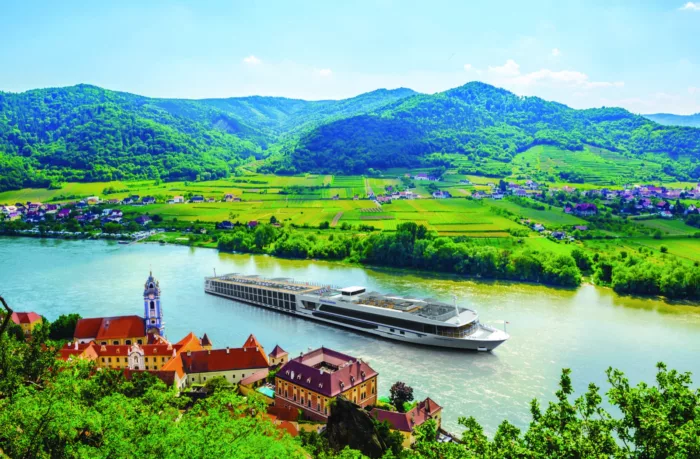
APT Travelmarvel
APT Travelmarvel brings expertise, knowledge and luxury to the party. From Europe to Asia, you are guaranteed the best accommodation, the highest-quality meals, and unique must-see locations.
Flexibility is the name of the game. APT Essential River Cruises ensures that a great balance of sightseeing and leisure time creates the freedom to explore at your own pace, without missing out on bespoke destinations and exclusive culinary experiences. You won’t be disappointed!
182
Passengers
44
Crew
2021
Launched
1700t
Tonnage
135m
Length
12m
Width
12kts
Speed
4
Decks
EUR
Currency
Cruise Itinerary
Days 1 - 2
Budapest, Hungary
Days 3 - 4
Vienna, Austria
Day 5
Melk, Austria
Day 6
Passau, Germany
Day 7
Regensburg, Germany
Day 8
Nuremberg, Germany
Day 9
Bamberg, Germany
Day 10
Würzburg, Germany
Day 11
Miltenberg, Germany
Day 12
Rüdesheim am Rhein, Germany
Day 13
Cologne, Germany
Days 14 - 15
Amsterdam, Netherlands

Days 1 - 2
Budapest, Hungary

Days 3 - 4
Vienna, Austria

Day 5
Melk, Austria

Day 6
Passau, Germany

Day 7
Regensburg, Germany

Day 8
Nuremberg, Germany

Day 9
Bamberg, Germany

Day 10
Würzburg, Germany

Day 11
Miltenberg, Germany

Day 12
Rüdesheim am Rhein, Germany

Day 13
Cologne, Germany

Days 14 - 15
Amsterdam, Netherlands
Ship Details


APT Travelmarvel
Travelmarvel Capella
We are excited to welcome you onboard our Contemporary River Ship, the Travelmarvel Capella. Launched in 2022, this stylish vessel has been custom designed specifically for Europe's waterways and features modern decor as well as a host of spacious public areas.
Cabins
All Prices






